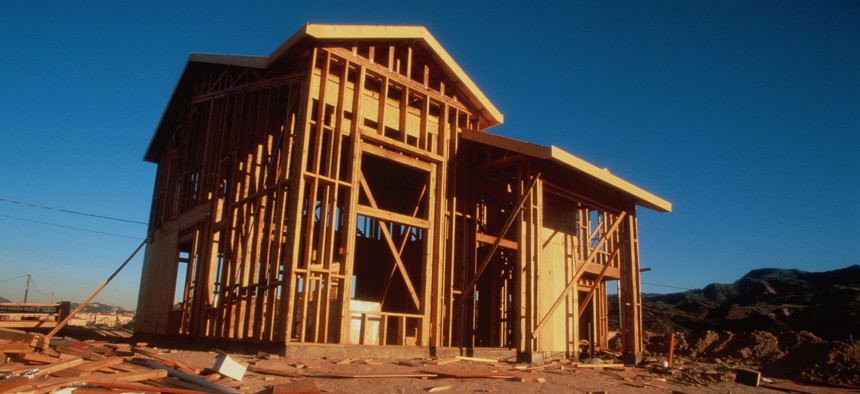States With the Greatest Housing Shortages

David Zaitz via Getty Images
The U.S. is short 3.8 million units, with “underproduction” of new houses and rentals worsening in 47 states and Washington, D.C., according to a new report.
The U.S. is 3.8 million homes short of meeting the country's housing needs, with demand in the “most economically productive regions” far exceeding annual construction of houses and multifamily units, according to a new report from Up for Growth.
Forty-seven states and Washington, D.C., are experiencing an increase in the “underproduction” of homes, the report said, with nearly 170 metropolitan areas struggling with housing underproduction, up from 129 in 2012.
The housing shortage is widespread, with nearly 75% of metropolitan areas seeing worsening levels, according to the report, which was funded by a wide variety of housing-related nonprofits and companies. Of the 309 metro areas analyzed, 169 are dealing with underproduction and 75 are trending toward underproduction.
Four years ago, the nation’s housing affordability problem was concentrated along the coasts and in the Southwest. But now, the report said, the crisis is more widespread because of underproduction and is impacting urban, suburban and rural areas.
There are three main reasons why certain cities and states are experiencing housing shortages, the report stated:
Missing households. The cost of buying or renting a home has become so expensive that "households are failing to form," the report said. Instead, more unrelated people are sharing a single residence.
Insufficient availability. There is a lack of available houses and rental properties because of exclusionary zoning, the report said. For example, more than half of housing underproduction in St. Louis, Missouri, is “the result of discriminatory policies such as exclusionary zoning codes stemming directly from the redlining maps of the city from the 1930s."
Uninhabitable units. In Detroit, Michigan, for instance, chronic disinvestment and bankruptcies have resulted in more than 60,000 places being inhabitable.
The report said that identifying housing underproduction trends is advantageous for local policymakers and advocates because data can show where lack of production is “at risk of worsening, allowing for quick action.” Review of other localities' housing data also allows for comparisons, highlighting policy reforms that are alleviating or worsening underproduction.
These are the states with the greatest housing underproduction, according to Up for Growth:
State, Number of Units
- California, 978,000
- Texas, 322,000
- Florida, 289,000
- New York, 234,000
- Washington, 140,000
- New Jersey, 137,000
- Colorado, 127,000
- Arizona, 123,000
- Illinois, 120,000
- Georgia, 118,000
For more information from the report click here.
Jean Dimeo is managing editor of Route Fifty.
NEXT STORY: Join Us for a Conversation With White House Infrastructure Coordinator Mitch Landrieu





